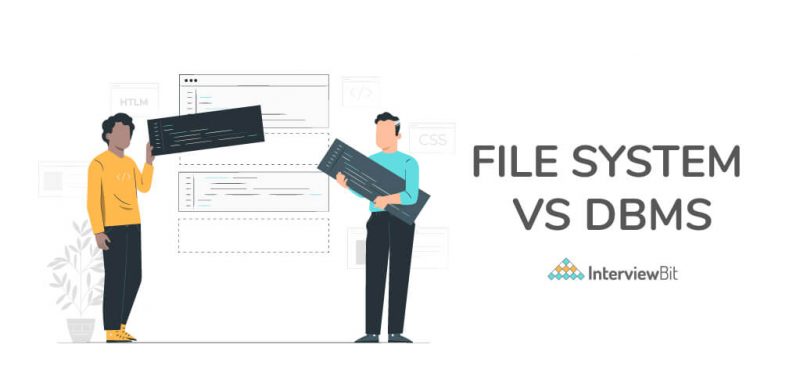What is a File System?
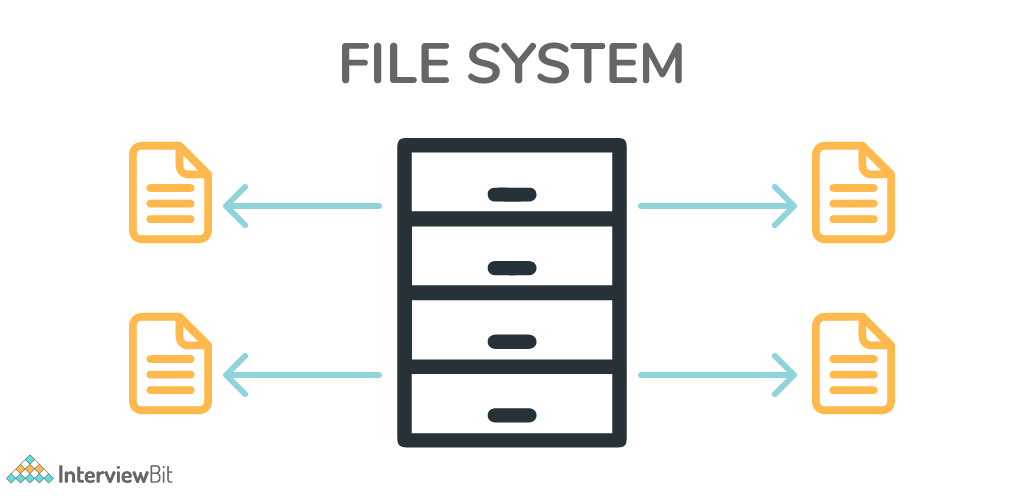
The operating system’s file system is a mechanism and data structure for controlling how data is saved and accessed. Data deposited in a storage medium without a file system would be one huge body of data with no way of knowing where one piece of data ends and the next begins. The data is easily extracted and identified by splitting it into bits and giving each one a name. Each group of data is referred to as a “file”.
A “file system” is the structure and logic rules that are used to organize groups of data and their names. Files can be collectively present inside a directory. Directories can again be present inside another directory giving it a hierarchical structure. Although Windows supports a variety of file systems, NTFS is the most popular in today’s world. Because files are commonly organized in a hierarchy, the file system allows you to browse the files in the current directory.
Following are some examples of File Systems:-
Confused about your next job?
FAT – FAT is a file system designed specifically for hard drives. File Allocation Table (FAT) was first introduced in 1977. It helps Microsoft operating systems manage files on hard disks and other physical media devices. It is also commonly found in devices such as digital cameras, flash memory, and other portable devices, where it is used to store file information. It also helps to extend the life of a hard drive by reducing hard drive wear and tear.
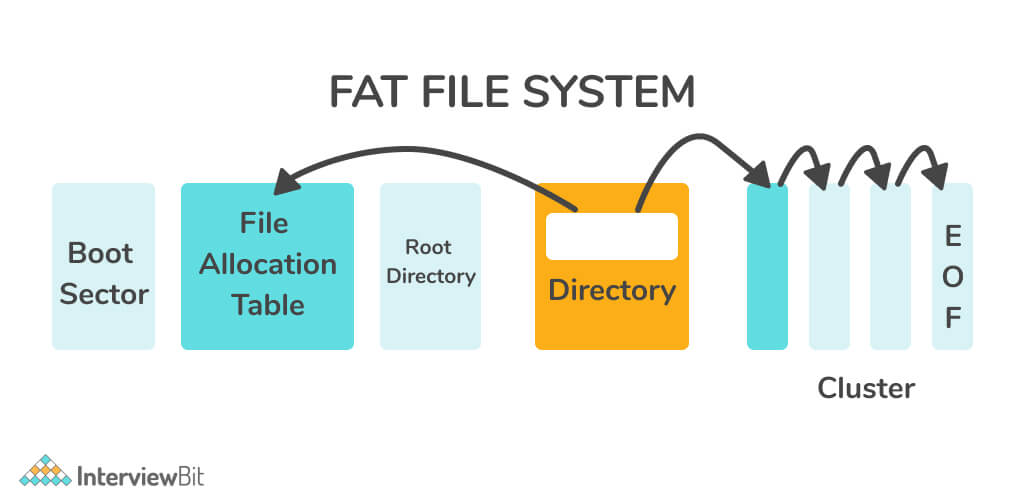
HFS –On a Macintosh computer, HFS (Hierarchical file system) is the file system that is used to create a directory when a hard disk is formatted. Its primary role is to organize and store files on a Macintosh hard disk. Since the release of OS X, Apple does not support writing to or formatting HFS disks. Furthermore, because HFS is a Macintosh format, Windows systems do not recognize HFS-formatted drives.
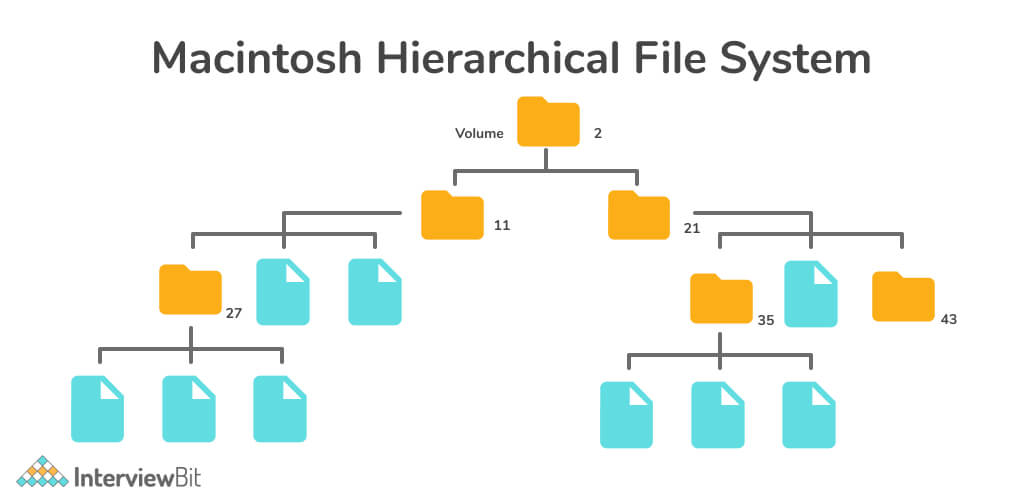
NTFS – NTFS is a file system that saves and retrieves files on the Windows NT operating system as well as other Windows versions such as Windows 2000, Windows XP, Windows 7, and Windows 10. The New Technology File System is another name for it. It offers superior ways of file recovery and data protection than the FAT and HPFS file systems, as well as a variety of improvements in terms of extendibility, security, and performance.
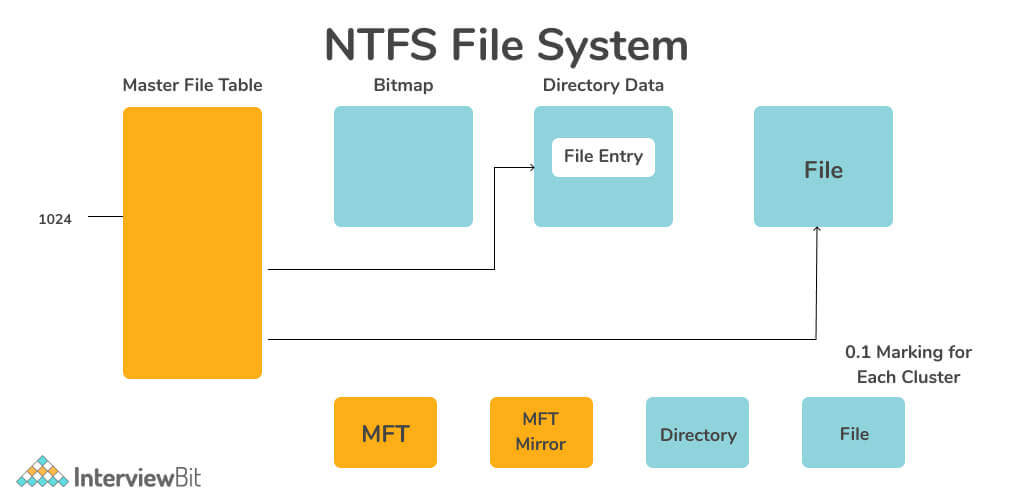
Features of the File System
Following are some of the features of File Systems:
Space Management – File systems allot space on a device in variable block sizes, usually several physical units. The file system is in charge of organizing files and directories, as well as keeping track of which media areas belong to which file and which do not.
When a file is not an exact multiple of the allocation unit, this results in unused space known as slack space. The average unused space for a 512-byte allotment is 256 bytes. The average unused space for 64 KB clusters is 32 KB. When a file system is constructed, the size of the allocation unit is chosen. The quantity of unused space can be reduced by determining the allocation size based on the average size of the files expected to be in the file system.
Hierarchical Data Management – Directories in file systems allow users to organise files into different groupings. This can be accomplished by linking the file name to a table of contents index or an inode in a Unix-like file system. Flat (i.e. linear) directory structures are possible, as are hierarchies in which directories can have subdirectories.
Metadata Management – Some extra information pertaining to each file is stored in a file system. A file system keeps all of the metadata connected with a file distinct from the contents of the file, such as the file name, the length of the contents of a file, and the file’s location in the folder hierarchy.
The names of all the files in a directory are usually recorded in a single place—the directory table for that directory—which is generally stored like any other file. Many file systems save only a portion of a file’s metadata in the directory table, while the rest is stored in an entirely distinct structure, such as the inode.
Integrity Management – One of a file system’s most important responsibilities is to ensure that the file system structures in secondary storage stay consistent regardless of how programs access the file system. This comprises measures executed if a program that modifies the file system stops abnormally or fails to notify the file system that its tasks have been finished. This could include updating metadata, directory entries, and any data that has been buffered but not yet updated on actual storage media.
Restricting access to Files – To control data access, file systems employ a number of approaches. The goal is usually to block a user or group of users from accessing or changing files. Another reason is to ensure that data is modified in a controlled manner, allowing access to a specific program to be restricted. Passwords saved in the file’s metadata or elsewhere, as well as file permissions in the form of permission bits, access control lists, or capabilities, are examples.
What is a Database Management System (DBMS)?
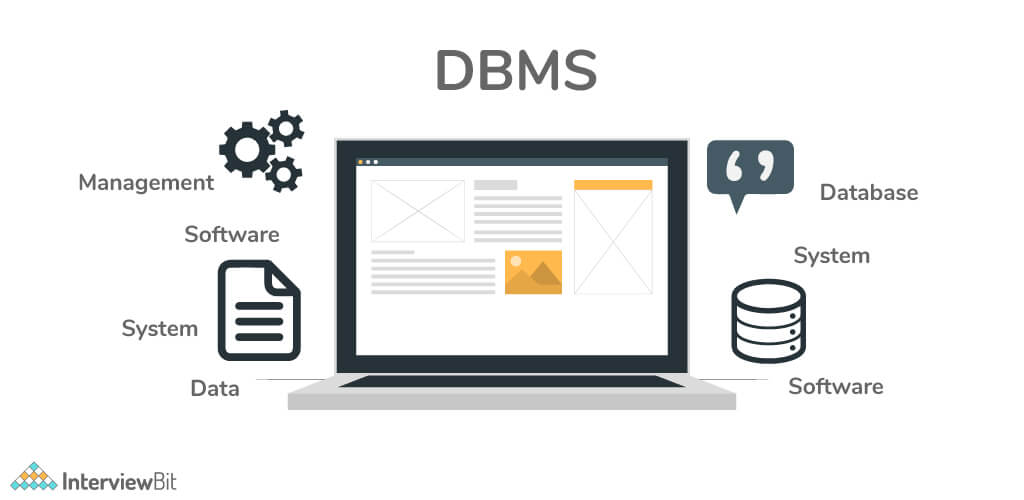
A database management system is a software application that manages databases (A database is a collection of interconnected data that is used to efficiently retrieve, insert, and delete data. It’s also used to arrange data into tables, schemas, views, and reports, among other things.). MySQL, Oracle, and other commercial databases, for example, are widely utilized in a variety of applications. It provides an interface for doing tasks such as building a database, saving data in it, updating data, and creating a table in the database, among others. It ensures the database’s safety and security. It also ensures data consistency when there are multiple users.
Types of Databases

Centralized Database
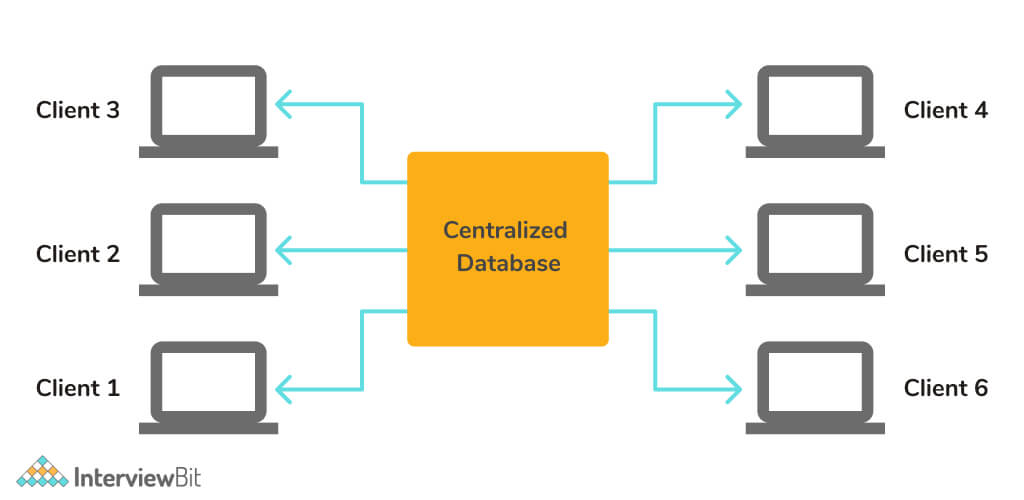
It’s a database that stores information in a centralized database system. It allows users to access stored data from a variety of locations using a variety of applications. These programs have an authentication method that allows users to safely access data. Central Library, for example, is a centralized database that contains information from all of the libraries in a college or university.
Distributed Database
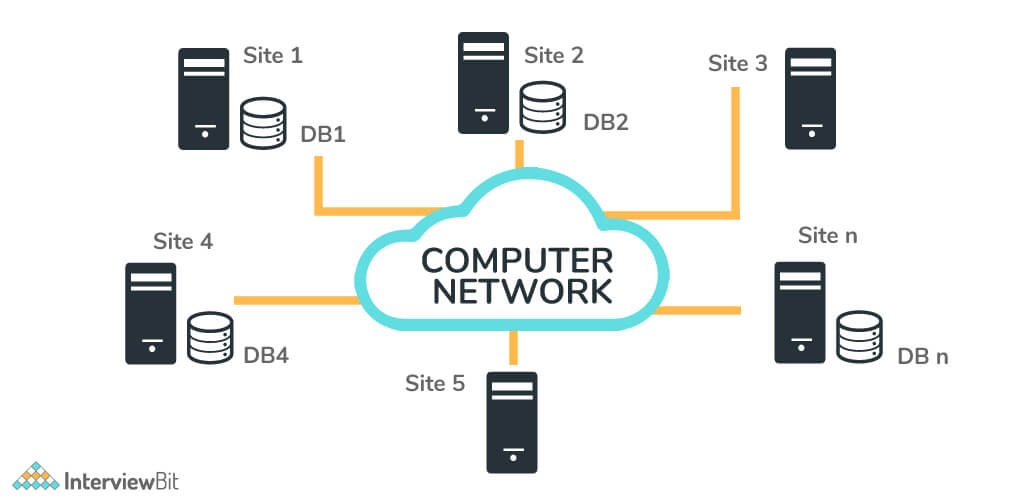
In contrast to a centralized database system, data in distributed systems is spread over multiple database systems within an organization. Network links these database systems together. End-users can readily access data with the use of such links. Some examples of distributed databases are Apache Cassandra, HBase, and Ignite.
It can further be classified into two types as follows:
- Homogeneous DDB: Database systems that run on the same operating system, employ the same application process, and have the same hardware devices are referred to as homogeneous DDB.
- Heterogeneous DDB: Database systems that run on a variety of operating systems, use a variety of application methods and use a variety of hardware devices.
Relational Database
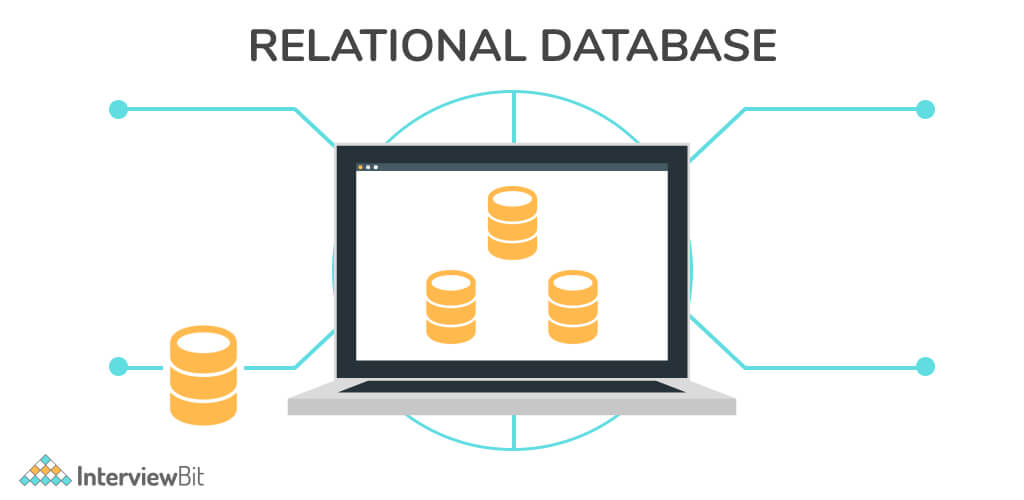
This database uses the relational data model, which stores data in the form of rows (tuples) and columns (attributes), which are combined to make a table (relation). SQL is used to store, manipulate, and maintain data in a relational database. In 1970, E.F. Codd invented the database. Each table in the database has a key that distinguishes the data from that of other tables. MySQL, Microsoft SQL Server, Oracle, and other relational databases are examples.
The ACID properties are the four most well-known properties of a relational model, and they are as follows:
- A stands for Atomicity: This ensures that the data operation will finish successfully or unsuccessfully. It employs an all-or-nothing approach. A transaction, for example, will either be committed or aborted.
- C stands for consistency: It means that when we execute any operation on data, the value before and after the operation should be retained. For example, the account balance should be correct before and after the transaction, i.e., it should be conserved.
- I stands for isolation: There can be multiple concurrent users accessing data from the database at the same time. As a result, data isolation should be maintained. When many transactions occur at the same time, for example, one transaction’s effects should not be apparent to the database’s other transactions.
- D stands for Durability: It assures that data modification are persistent once the operation is completed and committed.
NoSQL Database
NoSQL is a database that may be used to store a wide variety of data sets. It is not a relational database because it holds data in a variety of formats, not only tabular. It was created in response to a rise in the need for modern applications. As a result, in response to the demands, NoSQL introduced a wide range of database systems. A NoSQL database can be further classified into the following four types:
Types of NoSQL Databases
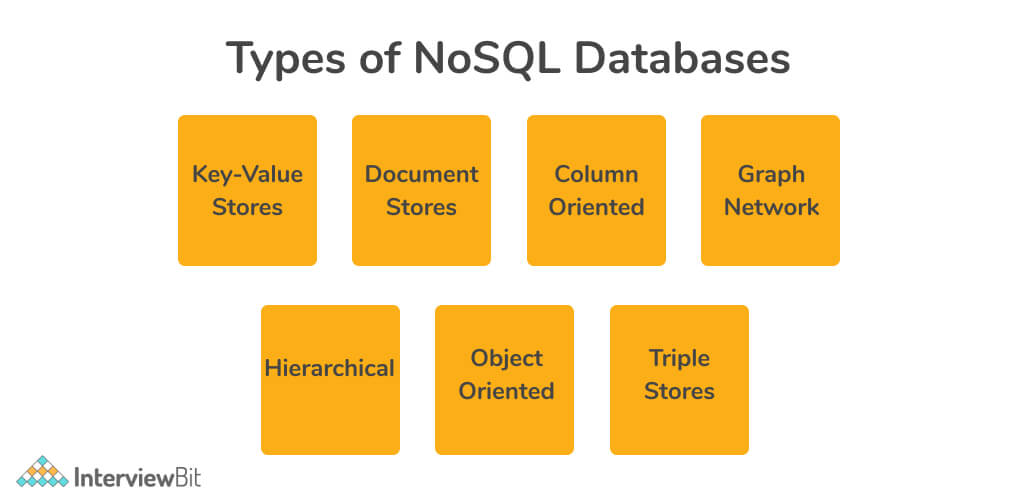
Key-value storage: This is the most basic sort of database storage, in which each item is stored as a key (or attribute name) that holds its value. Example – Tyrant, Redis, Voldemort.
Document-oriented Database: A database that stores data in the form of a JSON-like document. It facilitates data storage for developers by using the same document-model format as the application code. Example – CouchDB, MongoDB.
Graph Databases: These databases are used to store large volumes of data in a graph-like format. The graph database is most typically used by social networking websites. Example – OrientDB, InfoGrid, FLockDB.
Column Databases: It’s analogous to how data is stored in relational databases. Instead of storing data in rows, data is stored in huge columns. Example – Cassandra, HBase.
Features of DBMS

Following are the major features of a database management system:
Improves File Consistency – Organizations can build a standardized way to handle files and assure data consistency with other systems and applications by implementing a database management system. Advanced data management systems must be manipulated and streamlined. The use of an advanced database system enables the application of the same rules to all data across the company.
Enhanced Security – When dealing with enormous amounts of data, security becomes a primary priority for all companies. None except the database administrator or the departmental head has full access to a database management system. They are the only ones who can change the database and control user access, making it more secure. Depending on their access level, all other users are restricted.
Reduces Repetition and Redundancy – Because multiple users access the same database, the risks of data duplication are quite significant. By having a single data repository accessible by numerous users, a DBMS decreases data repetition and redundancy, allowing for easier data mapping while executing ETL (Execute, Transform, Load).
Provides a multi-user environment – A multi-user environment is a feature of database management software that allows multiple users to access and operate on data at the same time. Db software also allows for several data views. A view is a separate portion of a database that is allocated to specific system operators.
Multiple operators may require distinct database views since a database is often accessed by multiple operators at the same time. Operator A, for example, might wish to print a bank statement whereas Operator B just wants to check the bank balance. Despite the fact that they are both searching the same database, they will see different results.
Read More About: Features of DBMS
Difference Between File System and DBMS
| File System | Database Management System |
| A file system is a software application that organizes and maintains files on a storage device. It manages the storage and retrieval of data. | A database management system, or DBMS, is a software application that allows you to access, create, and manage databases. |
| The file system is more related to an operating system and is shipped as a part of the operating system itself. | The database is a software application and is not shipped as a part of the operating system. It is more about organizing the data and implementing techniques to keep the data consistent and to have faster access to the data. |
| The data format and storage details are provided by the file system. | A database management system (DBMS) provides an abstract representation of data that conceals the specifics. |
| A file system does not allow for efficient data storage and retrieval. | The use of a database management system is efficient because there are numerous techniques for storing and retrieving data. |
| It does not provide data recovery services. | In DBMS, there is a backup recovery option for data. |
| There is no crash recovery mechanism in the file system. | A crash recovery method is provided by DBMS. |
| It’s difficult to keep a file system safe. | A good protection method is provided by DBMS. |
| Data redundancy is higher in a file management system. | Redundancy is minimized to a great extent in a database management system. |
| The file system has a higher level of data inconsistency. Same data might be stored at multiple places yet have different values leading to data inconsistency. | A database management system has a low level of data inconsistency. |
| You can store data as discrete data files and entities using the File System. | Data, as well as defined restrictions and interrelationships, are stored in a database management system. |
| Support for complex transactions is not available. | Complex transactions are simple to implement. |
| In a File Management System, the centralization process is difficult. | In a database management system, centralization is simple to achieve. |
| In the file system, there is no efficient query processing. | In a database management system, data can be retrieved based on the requirements and can be easily filtered from the database. |
| Concurrency is not available in this system. | A concurrency facility is provided by a database management system. |
| It is less expensive than a database management system. | It is costlier than that a file system. |
| Data consistency is less reliable in the file system. | The process of normalization results in more data consistency. |
| It is difficult to implement integrity constraints in file systems. | Integrity constraints can be easily implemented in DBMS. |
| The system is less complex than a database management system. Complex transactions are not supported by file systems. | As compared to file systems, DBMS is more complex to handle. Complex transactions can be implemented easily in DBMS. |
| Data independence is not possible in file systems. | DBMS provides data independence. |
| File systems allow only one user to access data at a time. | Data can be accessed simultaneously by multiple users in a DBMS. |
| A file system provides less security than a database management system. | DBMSs are more secure than file systems since they have a wider range of security mechanisms. |
| The data is spread across many files, so sharing it is difficult. | Since data is centralized, it is easy to share. |
| Data storage and representation details are provided. | By hiding the internal details of the database, it makes it more secure. |
| Examples – NTFS (New Technology File System), FAT (File Allocation Table), EXT (Extended File System), etc. | Examples – My SQL, Oracle, SQL Server, PostgreSQL, Microsoft SQL Server, Microsoft Access, etc. |
Advantages and Disadvantages of File System
Advantages of File System
Following are the advantages of a file system:-
- Backup: Data held in files of computer-based systems can be backed up more quickly and automatically. Computer systems provide features that can help with this. It’s also possible to create a custom application for this.
- Compactness: Data can be stored in a small amount of space.
- Data Retrieval: Computer-based systems offer improved data retrieval techniques that make it simple and efficient to retrieve data from files.
- Editing: Any information saved on computers in the form of files can be easily edited. For this, certain application applications or editing tools can be employed.
- File Sharing: Data saved in computer-based system files can be shared by several users at the same time.
Disadvantages of File System
Following are the disadvantages of a file system:-
- Data Redundancy: It’s possible that the same data is duplicated in many files. This results in data redundancy and memory waste.
- Data Inconsistency: Due to data redundancy, it’s probable that data won’t be consistent.
- Accessing Data Is Difficult: It’s not simple to get data out of a file management system. It isn’t as convenient as it should be. When a user needs to access information, they must run specialized software. For example, we have a graphical user interface in our computers installed using which we access the files stored.
- Limited Data Sharing: Data is dispersed across multiple files. Moreover, separate files may have different formats, and these files may be housed in several directories belonging to various departments. As a result of this data segregation, data sharing between applications is challenging.
Advantages and Disadvantages of DBMS
Advantages of DBMS
Following are the advantages of a database management system:-
Better Data Transfer – Database management makes it possible for users to access more and better-managed data. As a result, end-users will be able to take a quick check at their environment and respond quickly to any changes.
Better Data Security – As the number of users grows, the rate at which data is transferred or shared grows as well, raising the danger of data security. It is frequently used in the corporate sphere, where organizations devote a significant amount of money, time, and effort to assure data security and proper use. A Database Management System (DBMS) helps firms improve data security by providing a better platform for data privacy and security regulations.
Data inconsistency is minimized – When various versions of the same data appear in different places in distinct files. For example, data inconsistency occurs when a student’s name is saved as “Rahul Gupta” on a school’s main computer, but the same student’s name is saved as “Gupta Rahul” on the teacher’s registered system. Data inconsistency can be considerably decreased if a database is appropriately built, thus minimizing data inconsistency.
Better decision-making – Because of DBMS, we now have better-managed data and improved data access, allowing us to generate higher-quality data and, as a result, make better judgments. Accuracy, validity, and the time it takes to read data all improve with better data quality. Although a database management system (DBMS) does not ensure data quality, it does provide a framework for improving data quality. DBMS provides an option to generate different types of reports which helps in decision making.
Increased end-user productivity – Data made available through a combination of technologies that turn data into valuable information enables end-users to make faster, more informed, and better decisions that can be the difference between success and failure in the global economy.
Simple – A database management system (DBMS) provides a logical and simple view of data. Many activities, such as file or data insertion, deletion, or creation, are simple to carry out.
Faster data access – The database management system (DBMS) aids in the production of speedy responses to database queries, allowing for faster and more accurate data access.
Disadvantages of DBMS
Following are the disadvantages of a database management system
The first disadvantage of the database management system is the cost of hardware and software. This is because DBMS requires a high-speed processor as well as a significant amount of memory. After all, in today’s world, there is an enormous volume of data in every field that must be stored safely and securely. The need for such a big amount of storage and a high-speed processor necessitates both pricey hardware and software. That is, advanced hardware and software are required, implying that we must improve the technology that supports the file-based system.
Staff Training Expenses – A good number is also required for educated staff (database administrator, application programmers, data entry operations) who maintain the database management system. We need database system designers as well as application programmers to be employed. As a result, a significant sum of money must be spent on software development.
Data Migration Costs – We need to convert our data into a database management system, which costs a lot of money and adds to the database management system’s cost. This is because, in order to complete the conversion, we will need to recruit database system designers for whom we will have to pay a significant sum of money, as well as the services of a software house.
Database System Maintenance – It is critical to keep your system up to date since efficiency, which is one of the most important variables that is often disregarded, must be optimized. As new threats emerge on a daily basis, all components must be updated on a regular basis. Databases, as they contain valuable and sensitive information, need periodic maintenance and security updates to protect from any security vulnerability. In addition, security measures must be put in place. Training costs have risen dramatically as database technology has advanced.
Performance – The old file system is designed for small businesses and specific applications, thus performance is generally excellent. However, because of its poor pace, DBMS does not perform well for small businesses. As a result, some apps will perform slower than they otherwise would. As a result, DBMS is not recommended for small businesses.
Frequently Asked Questions
Q1. Is a database better than a file system?
Ans. Both DBMS and file system have their own advantages and disadvantages as mentioned above. While a database management system offers reduced redundancy, reduced inconsistency, and improved query processing, it is much costlier than a file system. Also, it is much more complex. Hence, it depends on the requirements as to which would be a better choice to go ahead with. For a small-scale business, a file system would be the better option whereas, for a big-scale business, a database management system would be much better.
Q2. Give an example of a DBMS.
Ans. MySQL, PostgreSQL, Microsoft Access, SQL Server, FileMaker, Oracle, RDBMS, dBASE, Clipper, and FoxPro are some examples of database management systems.
Q3. In which format is data stored in DBMS?
Ans. It depends on the type of database management system used. A relational database management system stores data in the form of rows and columns while a NoSQL database management system may store it either in the form of columns, key-value pairs, document based, or in the form of graphs.
Q4. What formats are available in a file system?
Ans. There are various formats available in a file system. Examples include FAT, HFS, NTFS, and so on. They have already been discussed above.


